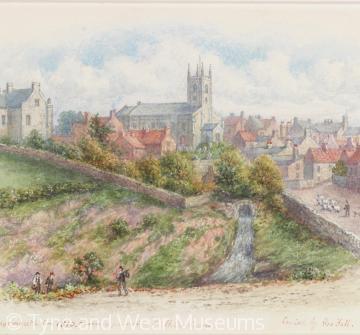The Early Wearmouth Settlements

Until 1719, the area that was to become Sunderland was divided into two parishes which served administrative as well as religious purposes. These parishes in turn were subdivided into a number of townships or vills, with small settlements distributed throughout the townships. The two parishes took their names from the larger villages near the mouth of the river where medieval parish life was centred. South of the river the pre-Conquest South Wearmouth (Wiremuthe australem)eventually became known as Bishopwearmouth (Wermouth Episcopi) since this township, together with the small medieval borough of Sunderland and the outlying vills of the parish were held by the bishop of Durham. On the northern bank of the river the site of the Anglian monastery, formerly known as Wearmouth (Wiremuthe), subsequently became known as Monkwearmouth (Wermouth monachorum) since this settlement and its two adjacent townships were, from the late 11th century, in the hands of Durham priory.
Content generated during research for two paperback books 'Sunderland and its Origins: Monks to Mariners' (ISBN 13 : 9781860774799) and 'Sunderland: Building a City' (ISBN 13 : 978-1-86077-547-5 ) for the England's Past for Everyone series






